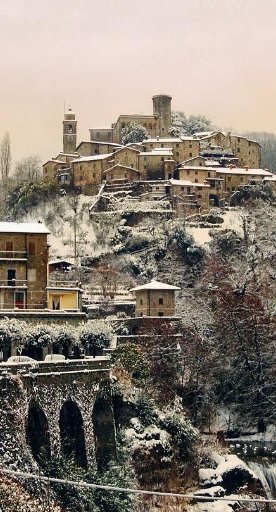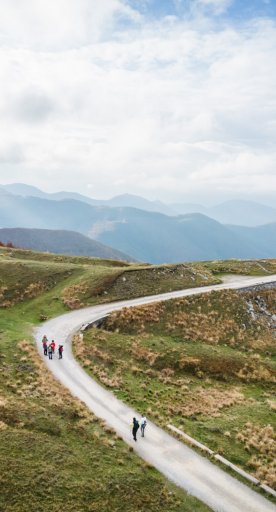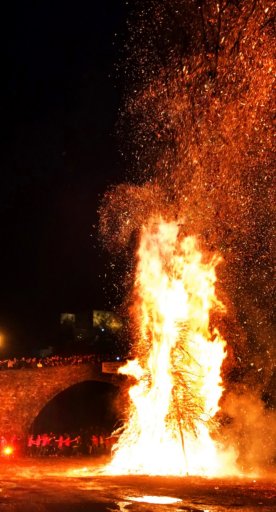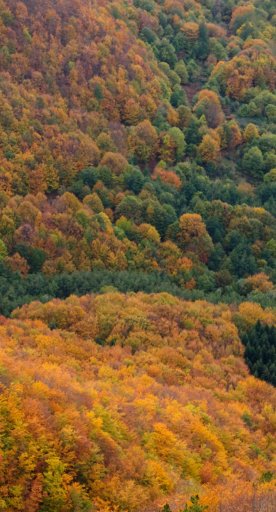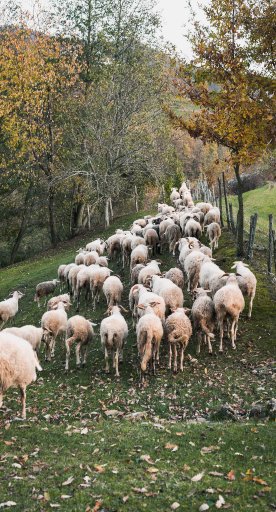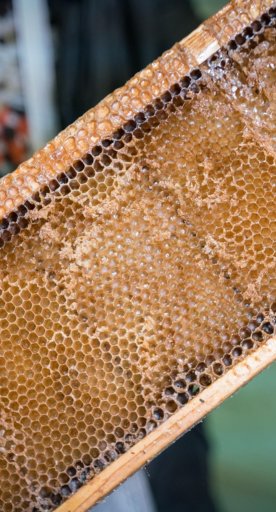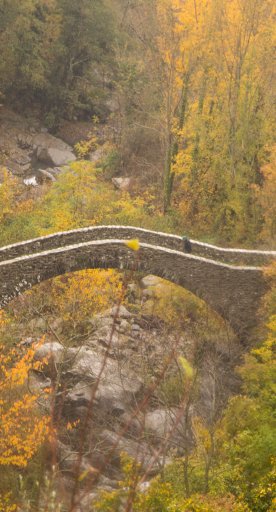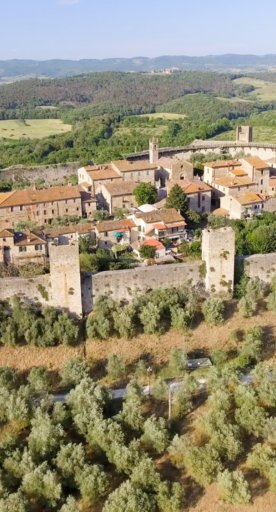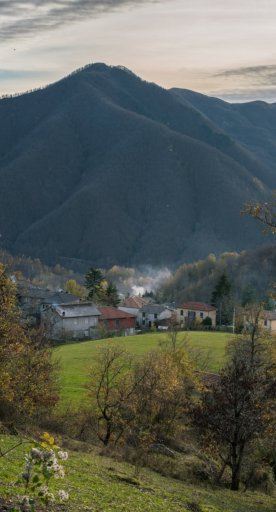

7 castles in the Taverone valley
Traveling along Via di Linari, between Via Francigena and Via del Volto Santo
The Taverone valley in Lunigiana, included in the political borders of the municipalities of Licciana Nardi and Comano, is crossed by an ancient and important communication route that connected, and still connects, Tuscany and Emilia: the Via di Linari or Strata Lizane which, starting from Fidenza, reached Lunigiana through the ancient Malopasso (now the Lagastrello Pass).
The large presence of castles and manors in the Taverone valley is the result of the need to control an important communication arterial road and the symbol of the presence of the Malaspina family's domination in the area.
-
1.Malaspina Castle in Terrarossa
-
2.Malaspina Castle in Monti
-
3.Malaspina Castle in Pontebosio and Poderetto Castle
-
4.Castel del Piano
-
5.Castle in Bastia
-
6.Malaspina Castle in Licciana Nardi
-
7.Castle in Comano
Malaspina Castle in Terrarossa

The route begins along the Via Francigena with the Malaspina Castle in Terrarossa, built in the 16th century in a more central position than the previous medieval fortification located on a nearby hill.
The imposing structure was built between the Civiglia torrent and the Magra river on the initiative of the first marquis of Terrarossa, Fabrizio Malaspina who, however, abandoned it after the death of his son, ceding the feudal and allodial assets to the Grand Duke of Tuscany Cosimo II in 1617.
The Castle is one of the largest Malaspina residences, it has a quadrangular plan and is built in a modern style with four bastions and large rooms, some of which now house the Albino Fontana Natural Library.
The Castle is now home to municipal offices.
Malaspina Castle in Monti

Monti, formerly called Venelia, is an area of very ancient settlement as evidenced by the discovery of five prehistoric Stele Statues.
Over the centuries, the Castle has followed the historical and political events of the fiefdom of Villafranca linked to the Malaspina dello Spino Secco. In the 16th century, Marquis Moroello Malaspina transformed it into a noble stately home, with wonderful vaulted ceilings and monumental fireplaces.
After the disastrous earthquake of 1920, the Castle was carefully restored and brought back to its former glory by the Malaspina family. From the splendid terrace the view is wonderful and allows you to see the whole Lunigiana, from the Tuscan-Emilian Apennines to the Apuan Alps.
The Castle can now be visited by the public with reservations required.
Malaspina Castle in Pontebosio and Poderetto Castle

The castle is located in the main square of the town, on the left bank of the Taverone, just downstream from the village of Licciana.
Its origins are not known, but it was from the 16th century that this place, given its strategic position, became important in the collection of feudal rights on transit. The fiefdom of Pontebosio, initially part of the fiefdom of Villafranca first and then of Bastia, became an independent fiefdom in 1574 with Fabrizio Malaspina who then exchanged it with the Castle in Terrarossa.
Over the years, struggles ensued over the allocation of the fiefdom and, in the 17th century, to counteract a troubled administration by the Marquis Ferdinando in dispute with the Marquis of Podenzana, the fortification of the Poderetto was erected by the latter on the opposite bank of the stream Taverone.
Documented as a place of gabelle (taxes), it was never completed and was, over time, transformed into a marquis residence.
Castel del Piano

The architectural complex is located a short distance from the village of Licciana, is surrounded by a curtain wall and is characterized by the presence of two corner turrets.
It was built in the 16th century with the primary function of reinforcing the fortified village of Licciana, later becoming the summer residence of the Malaspina marquises and a storage place for agricultural products. Following the unscrupulous actions of the Marquis Obizzo, it was attacked by 400 men of the Genoese troops in 1691 who thus managed to enter the village of Licciana.
The Castle today houses an accommodation facility with a winery.
Castle in Bastia

In a dominant position overlooking the valley and the Apennine ridge, the Fortress of Santa Caterina was mentioned for the first time in 1294 during the transfer of ownership from the marquises of Olivola to the marquises of Villafranca.
Occupied by the Genoese of Campofregoso, by the Visconti and then again by the Malaspina, it was besieged and taken by Giovanni delle Bande Nere. The castle was the residence of the beautiful Annetta Malaspina, lady of honor of the Duchess of Parma, last marquise of the Bastia line.
The castle has a trapezoidal plan and is characterized by the presence of four corner towers and a central keep which, according to historian Formentini, represents the oldest part of the fortification.
The Castle can now be visited by the public with reservations required.
Malaspina Castle in Licciana Nardi

The Malaspina Castle in Licciana Nardi, mentioned, together with the village, in written sources starting from 1255, was built to control the trans-Apennine road transit on the Via di Linari, one of the most important road junctions in the Val di Magra.
Built in different historical phases, it still retains the oldest part in the defensive tower in front of the church of San Giacomo. The dominion of the Malaspina dello Spino Secco was extended to this castle and its village in the 14th century and became an independent fiefdom in 1535 with Marquis Jacopo.
The Marquis line of descent remained sadly known for the often negative and violent figures who were guilty of fratricides, poisonings and power struggles.
Castle in Comano

The castle consists of an imposing tower, probably dating back to the 13th century, and a dungeon with Guelph battlements, both protected by a ring of walls equipped with flanking and control towers.
The territory of Comano was first subjected to the dominion of the Este family and then passed to the Malaspina: first with the marquises of Filattiera, and then passed under the domination of the fiefdom of Olivola. After a fratricide committed in the 14th century by the Dallo family, vassals of the Malaspina family, the fiefdom of Comano was annexed to that of Verrucola before being annexed in the following century to the Florentine Republic.
The Castle can now only be visited externally for security issues.



